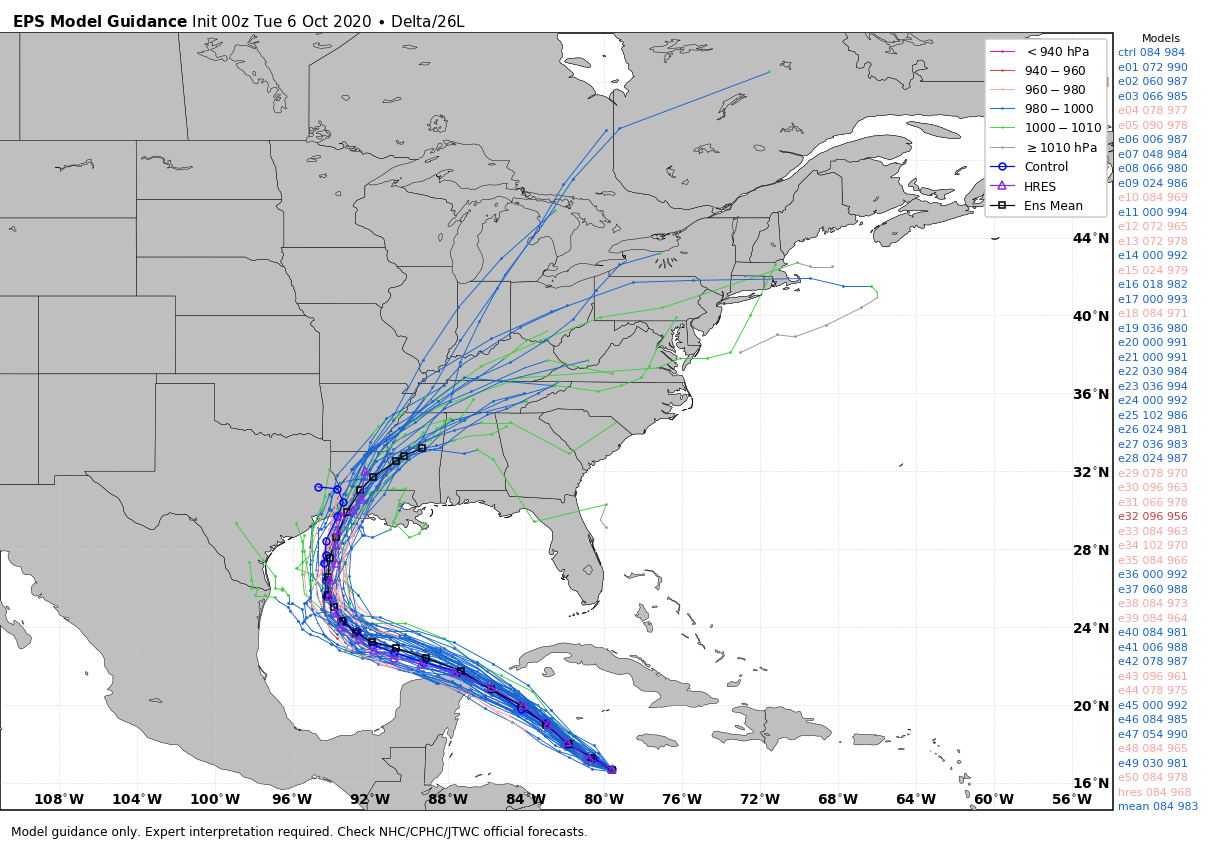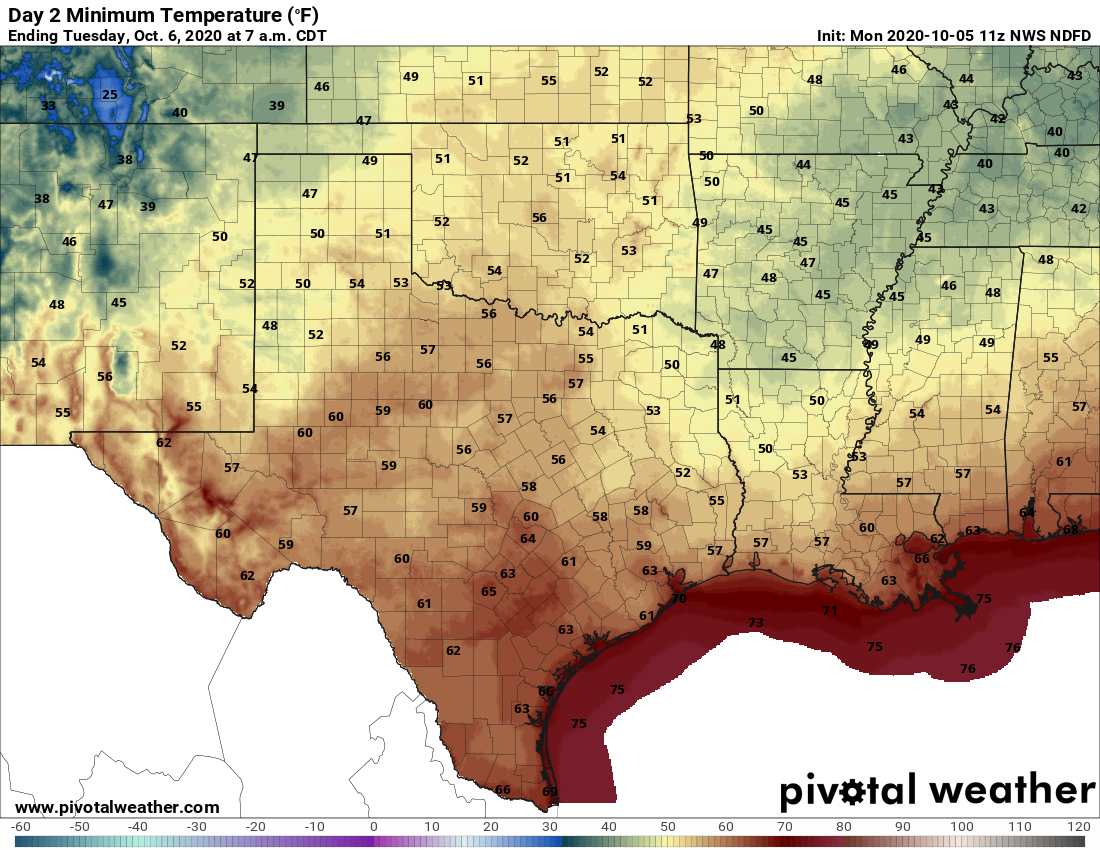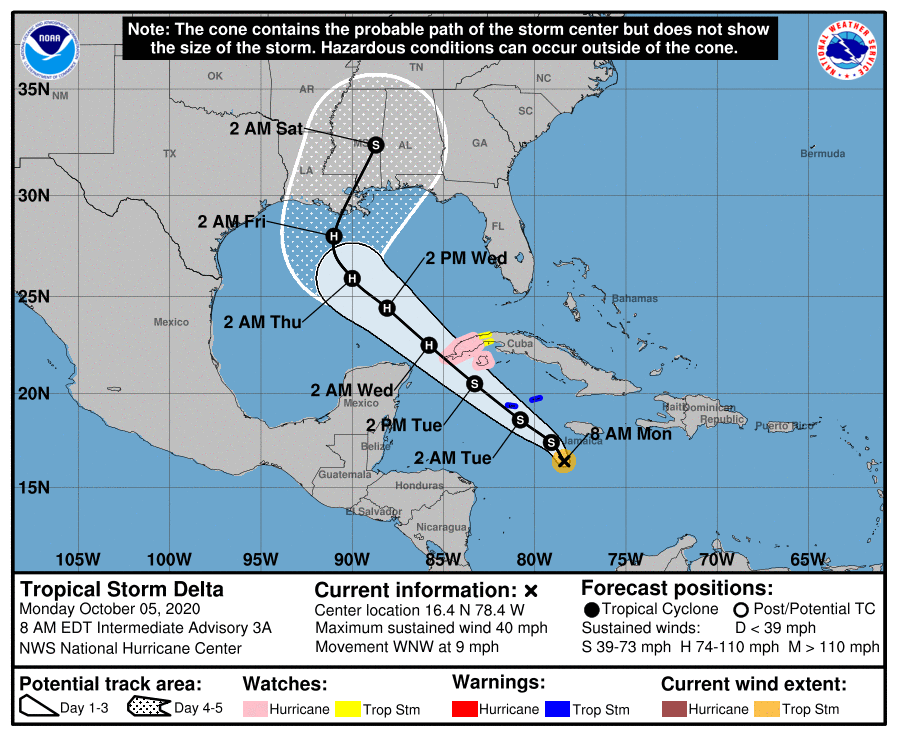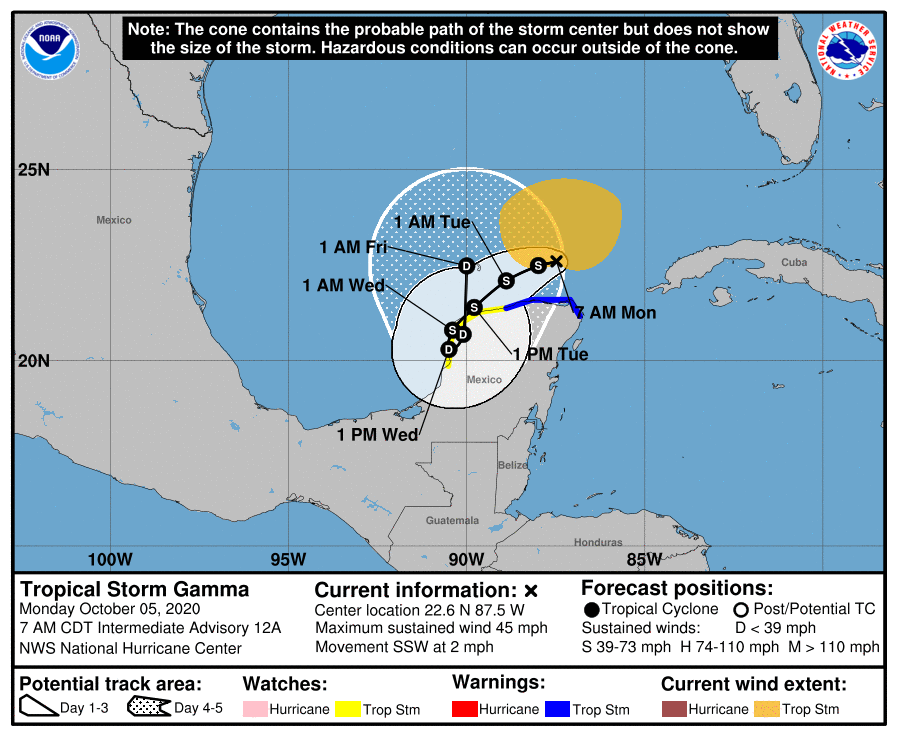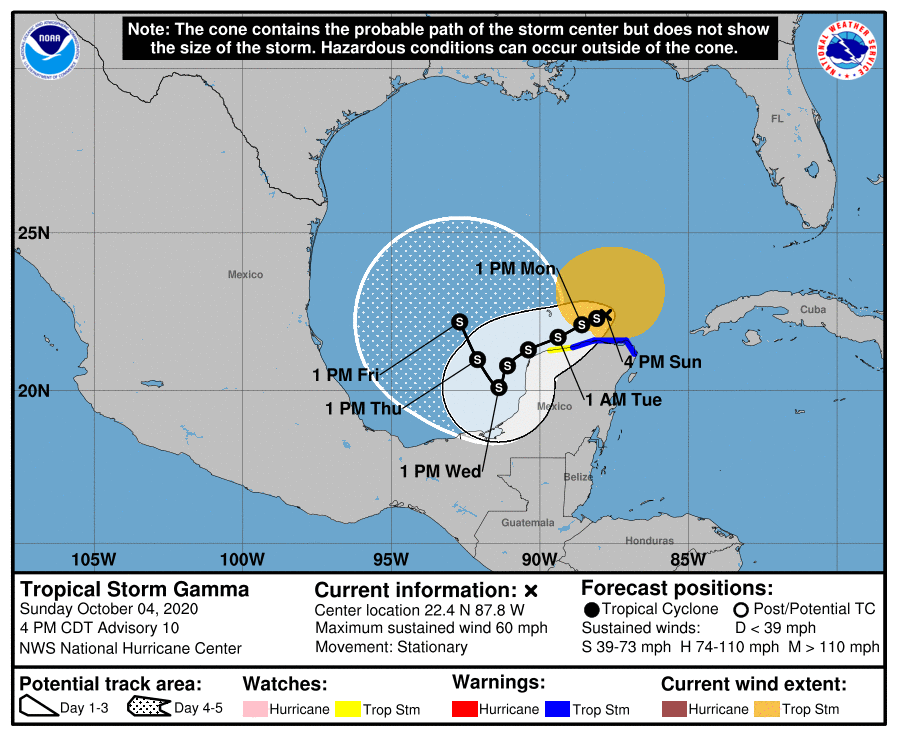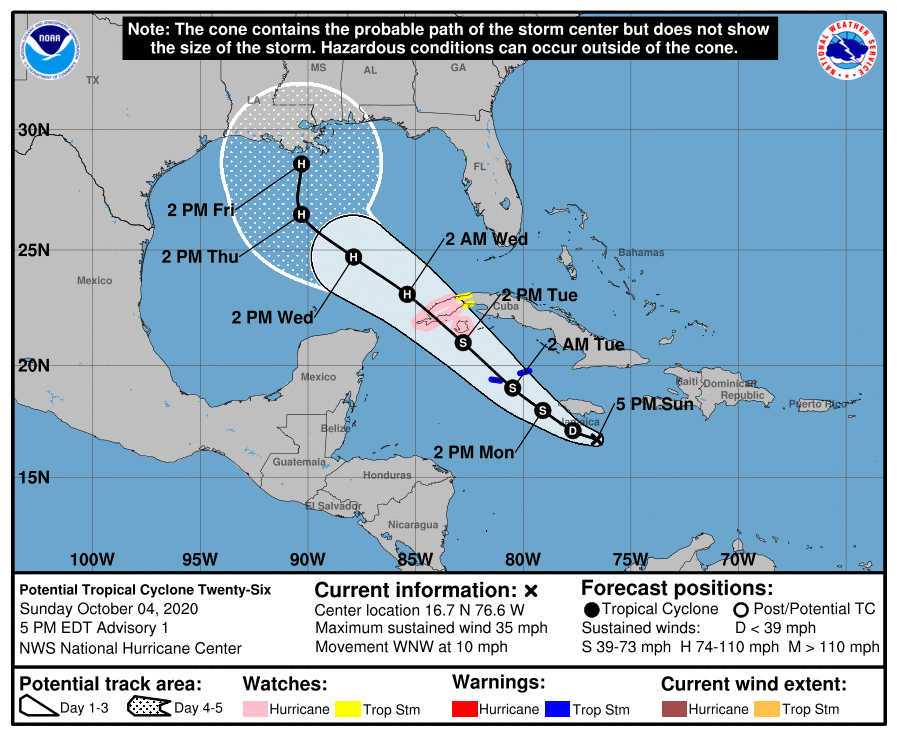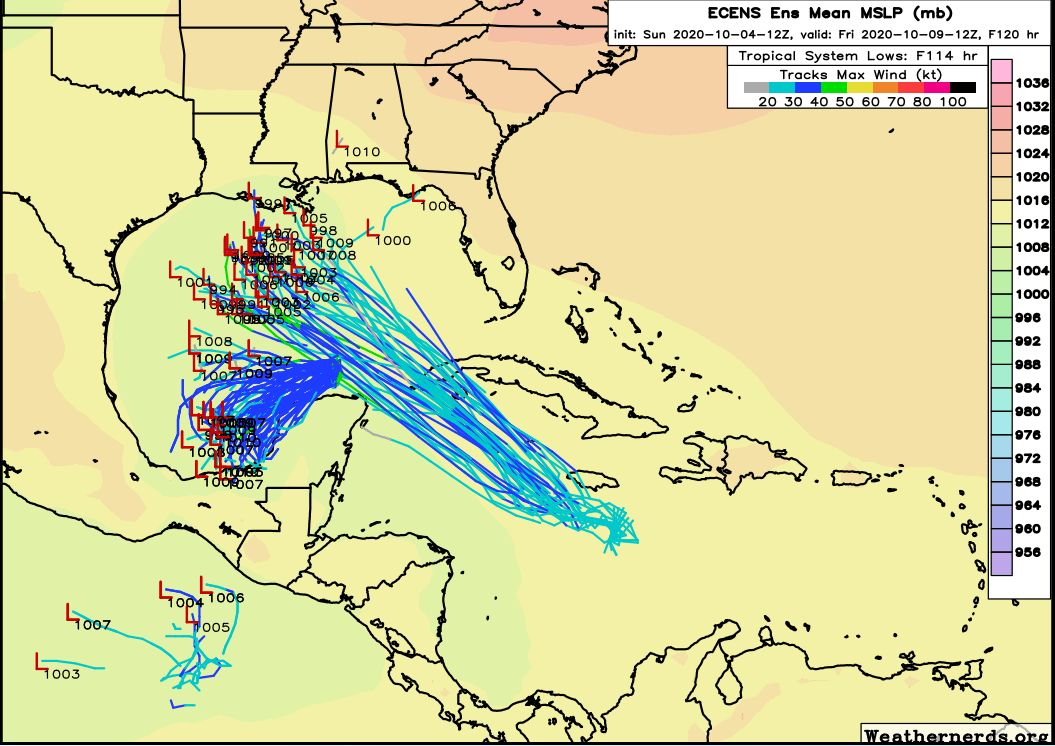2:10pm CT Tuesday: We’re talking about Hurricane Delta this afternoon, which has undergone rapid intensification and is now a powerful Category 4 hurricane with 140 mph winds. (It was only named Delta 30 hours ago.) The storm will approach the Yucatan Peninsula tonight, and likely make landfall somewhere near Cancún early on Wednesday. This will be a dangerous hurricane for that area. By Wednesday evening the storm will be back out over the Gulf of Mexico, moving to the northwest.
Track
Overall, the track forecast remains largely unchanged. The 12z models are beginning to show a tighter cluster of solutions in which Delta moves to the west-northwest, or northwest for most of Wednesday and Thursday. Then, when Delta is a few hundred miles offshore from South Padre Island, it should begin a pretty sharp turn to the north. All of the best available guidance now shows a final landfall between the Texas-Louisiana border—very near where the devastating Hurricane Laura came ashore in August—and further east, around Morgan City and Houma. This tighter clustering of models is consistent with the National Hurricane Center forecast track, and increases our confidence in where Delta is going to go.

With that said, we are still roughly three-and-a-half days away from landfall, so the average track error is about 120 miles, and we also have to account for the possibility of wobbles. The bottom line with Delta’s track is that right now every available bit of evidence we have suggests this storm is going to turn toward Louisiana—but its future path is not 100 percent locked down.
Intensity
Delta has had near ideal conditions for strengthening over the last 24 hours, including very warm waters not just at the surface, but also below. This is important because, as the storm moves across the ocean it churns up seas from below, a process known as upwelling, which can bring cooler water to the surface. One measurement of an ocean’s depth of warm waters is its “Tropical Cyclone Heat Potential,” and basically any value of 80 or higher is conducive for intensification. As you can see from a recent map of this potential, the waters in the northwestern Caribbean Sea are explosively warm.

This will begin to change as Delta moves away from the Southern Gulf of Mexico, at which time the storm also should begin to encounter more wind shear. These factors should help to limit the intensity of Delta as it moves toward the northern Gulf of Mexico, but it remains possible that this system could be a major hurricane at landfall.
Houston effects
Along this track Houston is likely to experience only very mild effects from Delta—perhaps some rain showers on Thursday, Friday or Saturday. Seas will reach their maximum on Friday, but should be below the levels the region experienced during Hurricane Laura.
Needless to say all of this depends upon the storm’s track, and if that changes significantly, so will our local forecast.
Our next update will come no later than 8:30 pm CT.



